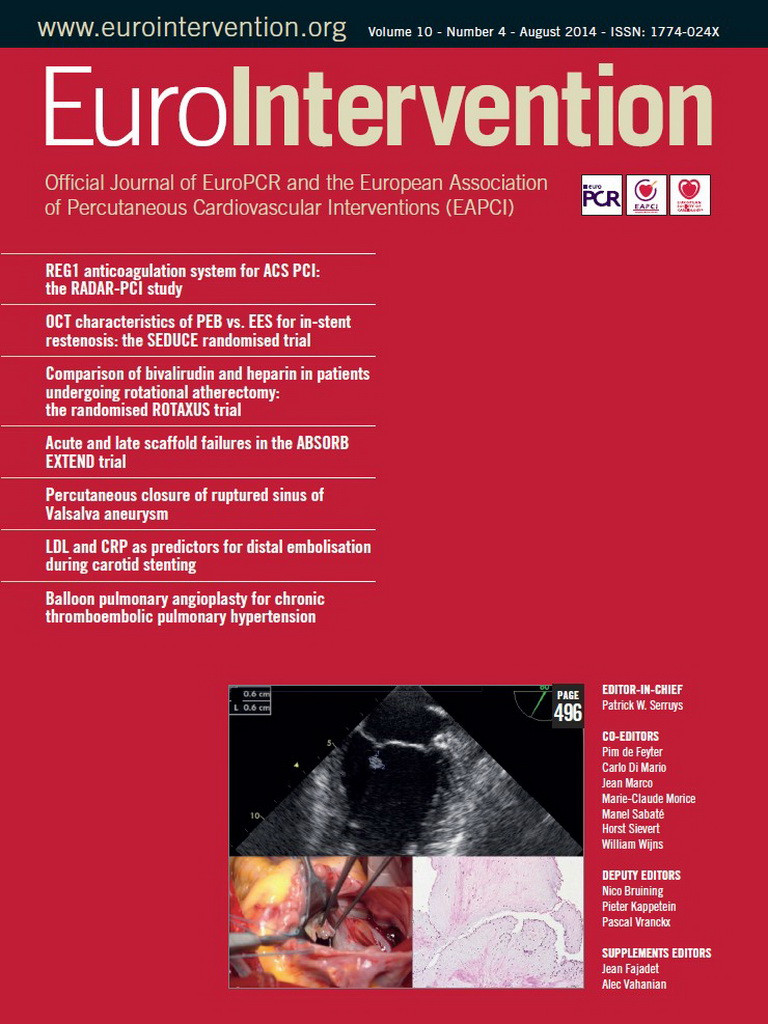As this issue of EuroIntervention is released, the annual European Society of Cardiology (ESC) Congress, with Barcelona as the host city, will be taking place. The main theme this year is “Innovation and The Heart”, concentrating particularly on improving clinical practice. This is a theme that has interested me since the earliest days of my professional life. In last month’s editorial I spoke about the resounding success of the first PCR Innovation Day in Paris, and it will be fascinating to see the planned ESC sessions on this topic from the perspective of the new approach to innovation launched during our May meeting.
There will be numerous sessions in Barcelona dedicated to this theme, which will encompass all aspects of cardiology. Also, in a session entitled “The Master prophecies: what innovations will change the future of cardiology”, Kenneth Dickstein, David Allan Wood, Luigi Paolo Badano and I will attempt to predict what the future will hold through a discussion of innovative concepts to prevent cardiovascular disease as well as innovative ways to detect it early. We will also focus on what are the most promising therapeutic strategies that will change our clinical practice in the near future.
It was clear to us all at the PCR Innovation Day that, to shape the future with innovations, three key elements should be in place: a recognised unmet need of the patient, inspired individuals possessing the ability, knowledge and skill, and finally financial support.
And what is this “innovation” itself? Why, it is quite simply doing something in a novel and original manner.
The term “innovation” has a positive feel to it and is synonymous with modern, cutting-edge technologies. Yet, in the science of economics, “innovation” is often coupled with “disruption”. This concept of disruptive innovation was first described by a Harvard Business School Professor, Clayton Christensen, in his book “The Innovator’s Dilemma”. Eric van de Velde, in his blog on the London School of Economics website1, referred to Christensen’s simple idea “that sticking with established technology can carry an enormous opportunity cost”, meaning that individuals or bodies tend to stick to what they know. Good examples of disruptive innovations can be found in many fields, for instance, the recent taxi disputes that have touched most major European countries with the arrival of the “Uber” taxi app, an app allowing anyone to register as a taxi driver. Another example is the slow death of travel agents as more and more frequently we book our travel arrangements online independently.
What does it mean in healthcare?
Value-based care will become steadily more important in the “innovation” arena as costs come under increasing scrutiny. The creation of electronic medical records was one of the first attempts to innovate with a clear cost-effectiveness principle. Another, lower cost innovation, was the development of highly qualified nurse practitioners replacing physicians in some areas of patient care and management.
In interventional cardiology, the continuing innovation of coronary stents has led to design refinements coupled with significant cost reduction compared to the early days. It is quite amazing to realise that today over 60 stents have received the CE mark. From the bare metal phase, we embarked on the drug-eluting phase, followed by the “bioresorbable” phase and today we are about to enter into the “nano” phase. We interventionalists were also disruptive for surgeons, with the issue of stenting or bypassing complex multivessel lesions. Even more recently this “disruption” has continued following the advent of TAVI.
In conclusion, the future for healthcare and specifically for interventional medicine is certainly bright. However, in order to innovate we must remember Albert Einstein’s wise words: “we cannot solve our problems with the same thinking we used when we created them.”
Reference

